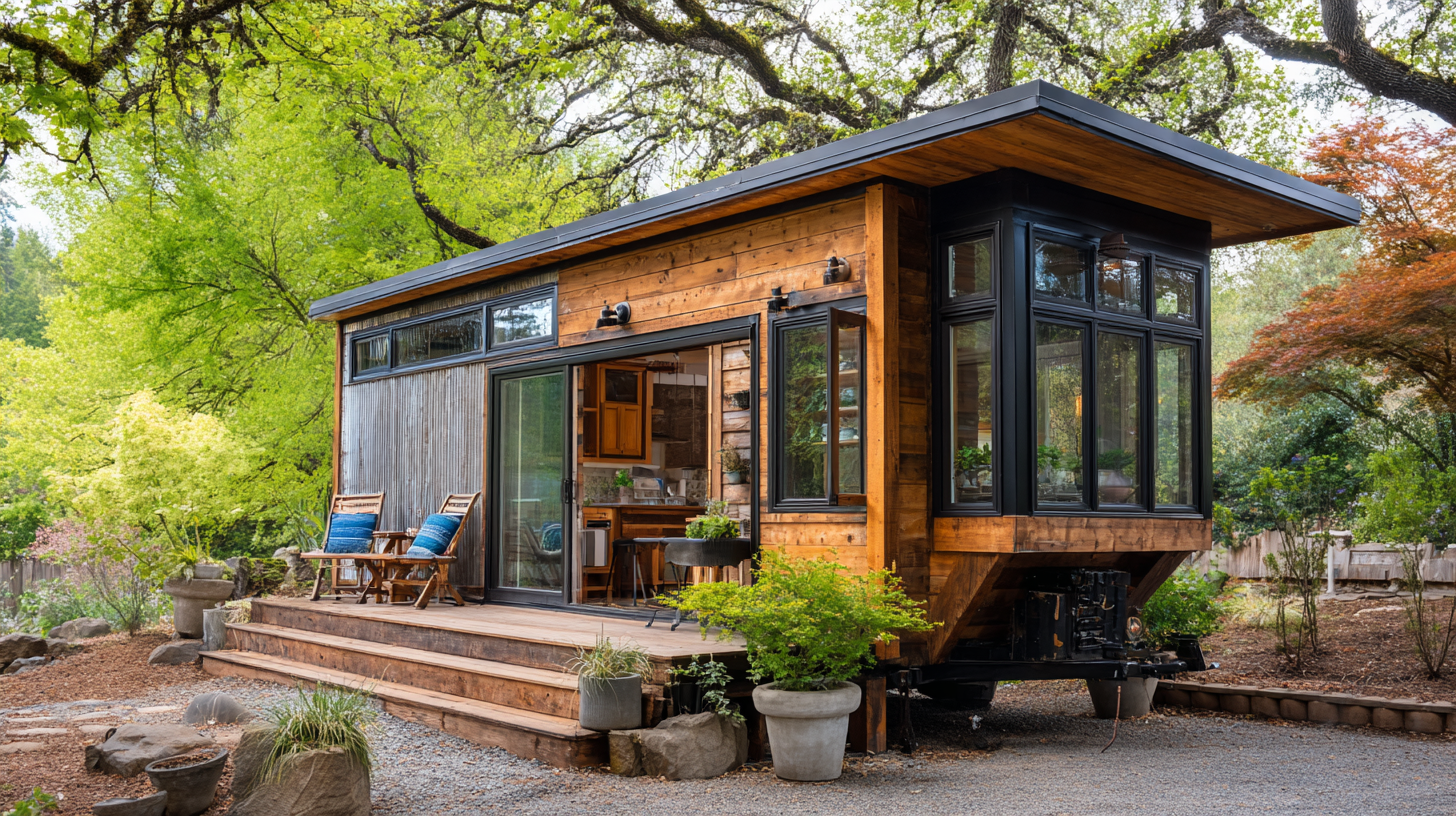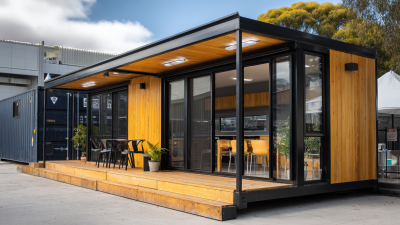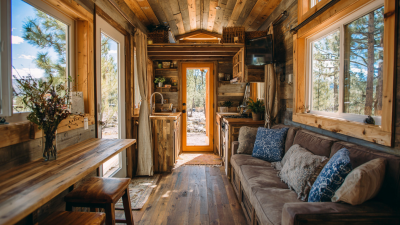10 Best Rent to Own Tiny Homes for Affordable Living
As the housing market continues to present challenges, many individuals and families are seeking innovative solutions to achieve homeownership. The concept of "rent to own tiny homes" has emerged as a viable alternative, allowing potential homeowners to gradually invest in their property while enjoying the benefits of living in a compact, sustainable dwelling. According to the Tiny House Society, the tiny home industry has seen an annual growth rate of 20% over the past five years, reflecting a growing interest in affordable, eco-friendly living options.
Industry expert Sarah Susanka, an influential architect and advocate for small living, emphasizes the importance of this trend: "Rent to own tiny homes offer a unique opportunity for people who are struggling with traditional housing costs. They provide an affordable pathway to homeownership, promoting financial stability and community engagement."
As we explore the "10 Best Rent to Own Tiny Homes for Affordable Living - 2025 Top 10," it is essential to recognize how these innovative housing solutions are reshaping the landscape of homeownership. By addressing affordability and sustainability, these tiny homes are not just a trend; they represent a significant move toward a more inclusive housing market.

Exploring the Benefits of Rent to Own Tiny Homes for Budget Living
Exploring the benefits of rent-to-own tiny homes offers a compelling alternative for those seeking affordable living solutions. With rising housing costs and increasing financial pressures, rent-to-own models present a viable path to home ownership without the burdensome upfront costs typically associated with traditional real estate purchases. This arrangement allows individuals to live in a property while gradually building equity, making it an attractive option for those who may not qualify for conventional mortgages.
Moreover, tiny homes have emerged as a significant player in the affordable housing landscape, particularly in urban areas grappling with housing shortages. They offer a sustainable way to maximize limited space while maintaining essential living amenities. As seen in projects like the one in Georgetown, tiny home communities are redefining the concept of affordability, combining practicality with innovative design. This movement not only addresses individual housing needs but also contributes to broader efforts to combat housing insecurity and homelessness in various regions, providing a crucial layer of support for vulnerable populations.

Key Features to Consider When Choosing a Rent to Own Tiny Home
When considering a rent to own tiny home, it's important to evaluate key features that will enhance your living experience. According to a report by the National Association of Realtors, the tiny home market has shown a consistent growth of 5-10% annually, underscoring the increasing demand for affordable living solutions. One key feature to look for is the home's energy efficiency. Tiny homes often utilize innovative insulation and solar technology, potentially cutting utility costs by 30-50% per month compared to traditional homes.
Another critical factor is the location. Research by the American Housing Survey suggests that tiny homes positioned in urban or suburban areas can significantly increase in value. Consider nearby amenities such as schools, public transportation, and recreational areas to ensure you’re making a wise investment.
Tip: Always inquire about the lease terms and the duration of the rent-to-own agreement to avoid unexpected costs.
Additionally, the layout and design of the home can greatly impact your quality of life. Open floor plans and multi-functional furniture can optimize small spaces, making them feel more expansive. The average tiny home size is around 400 square feet, so clever design choices are essential to maximizing living comfort.
Tip: Visit potential homes to assess storage solutions and overall livability before making your decision.

Top 10 Affordable Rent to Own Tiny Homes on the Market
The trend of tiny homes has gained momentum as more individuals seek affordable living solutions. The "Rent to Own" model has emerged as a viable option for people who want to transition into homeownership without the hefty upfront costs. This approach allows potential homeowners to rent a tiny home for a specific period, with the option to purchase it at the end of their lease. Among the many models available, several stand out for their affordability and unique features.
One of the top choices in the market is the "Modern Minimalist," which boasts sleek lines and efficient use of space. It’s designed for sustainable living, incorporating energy-efficient appliances and solar panels. Another affordable option is the "Rustic Retreat," which offers a cozy, cabin-like atmosphere while providing essential amenities. With various styles and layouts, these rent-to-own tiny homes cater to diverse lifestyles and preferences, making them perfect for individuals or small families looking for an economical yet stylish living solution.
10 Best Rent to Own Tiny Homes for Affordable Living
| Model | Size (sq ft) | Monthly Payment ($) | Total Price ($) | Location | Bedrooms |
|---|---|---|---|---|---|
| Modern Minimalist | 300 | 600 | 30,000 | California | 1 |
| Eco-Friendly Retreat | 250 | 550 | 27,000 | Oregon | 1 |
| Rustic Cabin | 400 | 700 | 42,000 | Alaska | 1 |
| Charming Cottage | 350 | 630 | 33,000 | Florida | 1 |
| Sleek Studio | 275 | 580 | 29,000 | Texas | 1 |
| Luxury Tiny House | 320 | 750 | 36,000 | Colorado | 1 |
| Artistic Abode | 240 | 520 | 25,000 | Washington | 1 |
| Family-Friendly Home | 400 | 800 | 48,000 | New York | 2 |
| Beachside Bungalow | 350 | 700 | 35,000 | Hawaii | 1 |
| Mountain View Cabin | 360 | 750 | 37,500 | Nevada | 1 |
Understanding the Financial Aspects of Rent to Own Agreements
When considering rent-to-own agreements, understanding the financial implications is essential for potential homebuyers. In a rent-to-own arrangement, a portion of the monthly rent is allocated toward the future purchase of the home. Recent reports indicate that these agreements can be particularly appealing in housing markets where traditional mortgages are inaccessible or unfavorable due to stringent lending criteria. The Consumer Financial Protection Bureau has noted a rising interest in lease-purchase agreements as alternatives that facilitate homeownership for those with limited financial options.
It’s crucial to approach these contracts with caution. Many rent-to-own agreements can be intricate, often with terms that vary widely. A recent analysis highlights that while they can provide a pathway to homeownership, buyers should ensure they fully understand the implications, including how their rent payments contribute towards the down payment. Moreover, comprehensive legislation like Ind AS 116 provides guidelines for recognizing and presenting leasing agreements, which is particularly relevant for landlords and tenants navigating these types of financial arrangements. Always consider consulting financial experts to navigate the nuances of rent-to-own agreements effectively.
Comparison of Rent to Own Tiny Homes Costs
Sustainable Living: Why Tiny Homes are the Future of Affordable Housing
As the demand for affordable housing continues to surge, tiny homes have emerged as a sustainable solution that meets both economic and environmental needs. A report from the American Tiny House Association indicates that approximately 68% of tiny home dwellers find their lifestyle financially beneficial, with an average savings of $23,000 when compared to traditional homes. This affordability stems not only from lower purchase prices but also from reduced utility costs, as tiny homes are designed to minimize energy consumption.
Moreover, the tiny home movement aligns seamlessly with the growing call for eco-friendly living. According to a study conducted by the National Association of Home Builders, tiny homes typically consume up to 90% less energy than standard homes, which can significantly reduce carbon footprints. The compact design often incorporates sustainable materials and technologies, such as solar panels and rainwater harvesting systems. These innovations make tiny homes a frontrunner in the pursuit of eco-conscious living, attracting a generation increasingly aware of their environmental impact. Thus, tiny homes not only present an affordable housing option but also represent a viable path toward a more sustainable future.
Related Posts
-

Exploring Sustainable Living: The Rise of Prefab Tiny Houses in Modern Eco-Friendly Design
-

Discover the Benefits of Portable Granny Flats for Modern Living Spaces
-

Exploring the Tiny House Movement: How Minimalism is Shaping Sustainable Living Today
-

Exploring the Future of Living with Innovative Tiny Home Models
-

What is Little Homes and How They Transform Your Living Space
-

Discover the Freedom of Living Light with Portable Tiny Homes
